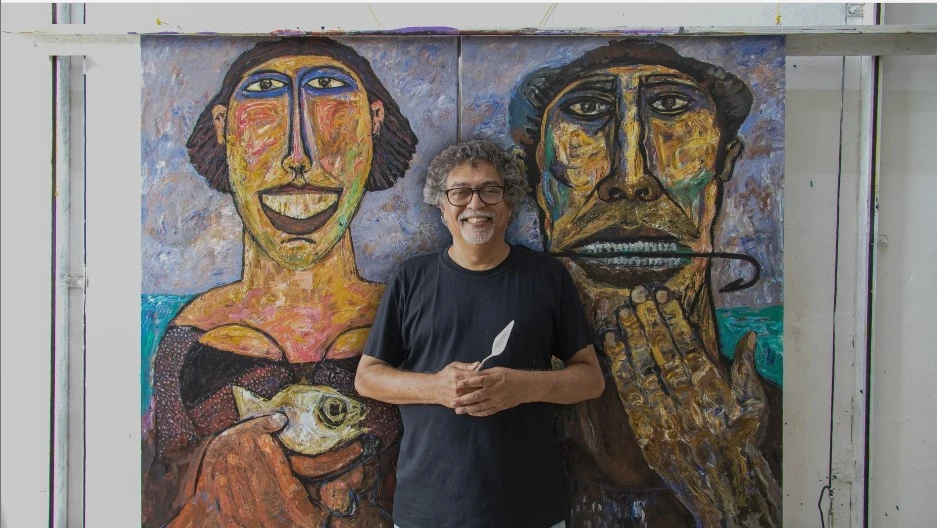26th August 2023. ON THIS DAY.
“My opinions find expression in my creation. I believe that artists are sensors, receptors, and transmitters of ideas in a society and I try to fulfil that role to the best of my ability, even at the cost of winning the ire of those in power.” – Subodh Kerkar
The ocean has been a muse to artists since time immemorial both for its aesthetic appeal and its enormous role in mobilising the history of human civilization. In the Indian context, the ocean has been crucial to the nation’s colonial past beginning with the Portuguese sailors discovering the nation in the 15th century, followed by a long history of European colonization. For Subodh Kerkar the ocean has been integral in engendering and communicating his understanding of the world. Born on 26th August 1959 in the coastal state of Goa, Kerkar is an Indian painter, sculptor, and installation artist. He is also the founding director of the Museum of Goa and holds the Mario Miranda Chair for Arts at Goa University.
The son of an art teacher, Kerkar always took an interest in art. Nonetheless, as an adult, he joined the Goa Medical College and became a doctor by profession. In 1990, however, he gave up his medical practice to pursue his passion to become an artist. He began his career in art as a watercolourist and soon emerged as an eminent artist of the medium in the country. Later, he extended his practice to include a wide range of mediums like sculptures, performance art, land art, ceramic art, photographs, and most recently digital art.
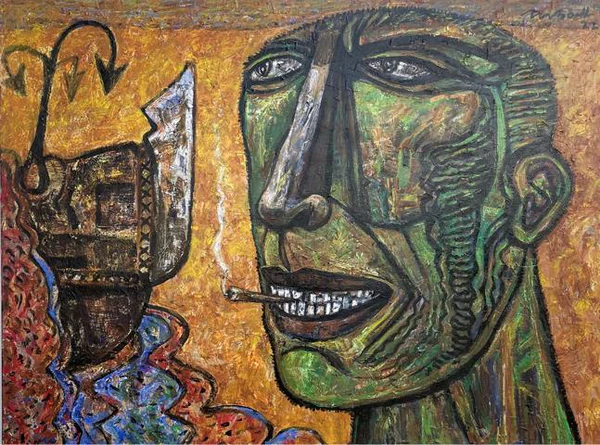 Bostiao. 2022. Acrylic on canvas. 122 cm x 91 cm. Courtesy of Subodh Kerkar.
Bostiao. 2022. Acrylic on canvas. 122 cm x 91 cm. Courtesy of Subodh Kerkar.
Kerkar’s artistic career has primarily revolved around two subjects, firstly, the ocean and its socio-cultural history in relationship to India, especially the Goan state and secondly, the philosophical ideas and the artistic archive associated with the figure of Mahatma Gandhi. Speaking about the influence of the ocean, Kerkar says, “I consider myself an ocean artist. The ocean is both, inside and outside my works; my master and my muse. I celebrate the ocean as a creator of civilizations. I am an avid student of history which becomes a footnote to most of my works.”
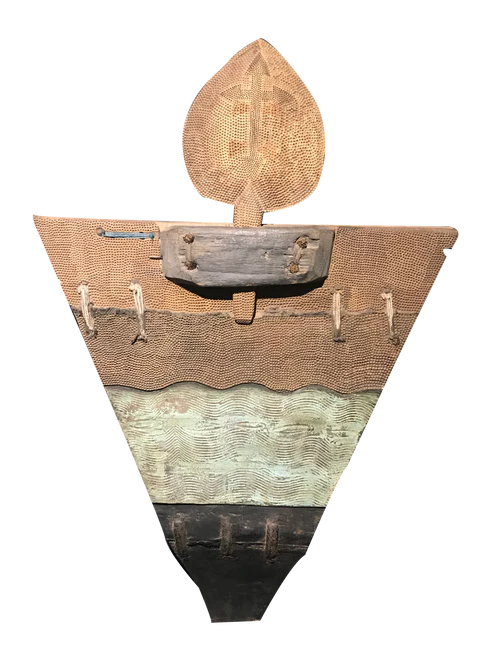 Marine Icons: Pepper Cross. 2019. Piece of old wooden canoe, oar, and bronze plate. 82 cm x 66 cm x 3 cm. 20 kgs. Courtesy of Subodh Kerkar.
Marine Icons: Pepper Cross. 2019. Piece of old wooden canoe, oar, and bronze plate. 82 cm x 66 cm x 3 cm. 20 kgs. Courtesy of Subodh Kerkar.
Take for instance his series ‘Pepper Cross’ which brings trade, represented by pepper, and religion, represented by the cross, together while also referring to the sea by using actual material from a century-old boat and oars, thus making a strong reference to the earliest European encounters with the Indian nation: Vasco-da-Gama reached Kappad, near Calicut on the 20th of May 1498. The first man to be sent ashore was Joao Nunes (an expendable convict). Nunes met two men from Tunisia on the shore, who asked him in Spanish, “What the devil brought you here?” “We come for Christ and for pepper,” he answered. The Portuguese held a monopoly of the pepper trade in the Indian Ocean until the Dutch and the English arrived in the 17th century. Kerkar wonders that, “If India did not have pepper, perhaps we would never have been colonized.”
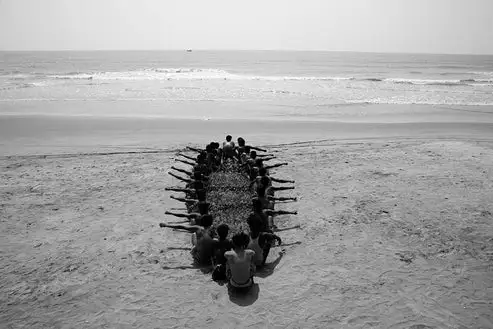 Fishermen and the Ocean. Digital media. Ongoing. Courtesy of Subodh Kerkar.
Fishermen and the Ocean. Digital media. Ongoing. Courtesy of Subodh Kerkar.
Kerkar has got an intimate knowledge of fishermen’s lives ever since his days as a doctor. He understood that their lives are intertwined with the ocean beyond the notions of sustenance. For him, their existence is ‘marinated in the ocean’ through ritualistic and everyday cultural practices. In his performance art series Fisherman and the Ocean, he explores the symbiotic relationship between the two by visualising oceanic rituals. The fishermen are seen paying homage to the sea by assuming formations indicating their boats, the cross as well as circular formations depicting cross-cultural solidarities that the ocean has helped engender.
Carpet of Joy. 2017. Discarded plastic water bottles, oil paint, plastic net. Courtesy of Subodh Kerkar.
In the 2000s, Kerkar began his foray into the field of “land art” and began by creating sculptures from scrap and garbage. One of his most prominent works is Carpet of Joy which was created to protest the excessive littering in Goa on the 100th anniversary of Gandhi’s first experiment of satyagraha (which Gandhi began in Champaran on April 10, 1917). This captivating work used 1,50,000 discarded plastic bottles, collected from beaches and hotels in Goa, to weave a carpet. Kerkar believes that had Gandhi been alive today, he certainly would have protested littering.
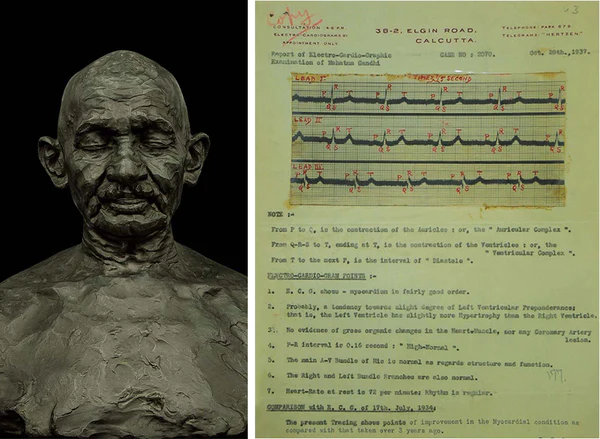 Gandhi’s Heart Sounds. 2020. Multimedia. Courtesy of Subodh Kerkar.
Gandhi’s Heart Sounds. 2020. Multimedia. Courtesy of Subodh Kerkar.
For Kerkar, Gandhi is almost a divine figure whose humungous influence on Indian and world history needs to be acknowledged and his principles revived in the contemporary times of hostility. In this direction his collaborative project ‘Reclaiming Gandhi’ attempts to engage with the Gandhian thought using various artistic mediums. Gandhi’s Heart Sounds is one of his most interesting artworks. A few years ago, Kerkar walked into the office of Dr. Annamalai, the director of the National Gandhi Museum. Dr. Annamalai then produced Gandhiji’s original medical file, which, apart from many blood and urine reports contained a few electrocardiograms. As a doctor fascinated with the intersection of biology and physics, Kerkar was thrilled to discover that he could convert the ECGs into a sonic rendering of what Gandhiji’s heart might have sounded like. He then created an animation of Gandhi’s sculpture which gives a faint smile to the viewer every minute.
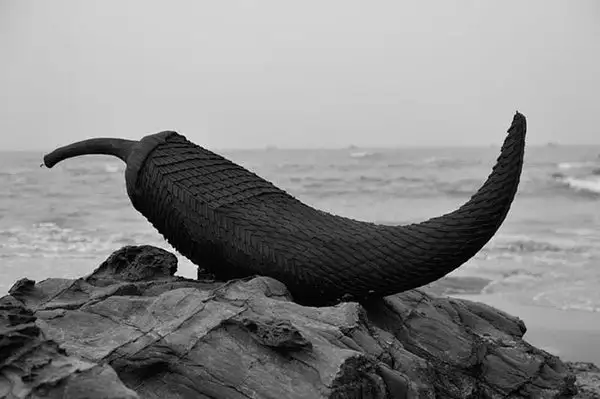 Chilli 01. Fibreglass and tyre pieces. Courtesy of Subodh Kerkar.
Chilli 01. Fibreglass and tyre pieces. Courtesy of Subodh Kerkar.
As an artist who continually expands his oeuvre by experimenting with new mediums, what is central to Ketkar’s philosophy is that art should respond to the socio-political concerns of the day. As the poet and critic K. Satchitanandan notes, Subodh Kerkar has “radicalised public art in India… [he] de-specifies materials by using them in unexpected contexts and combinations. Art here does not become mere art or mere life. Art and non-art become indiscernible in this new aesthetic practice.”
References
- subodhkerkar.com
- The Hindu: dialogues-with-history
- The Wire : Gandhi art Subodh Kerkar
- Homegrown: beachfront masterpieces how a Goa-based installation artist brings the ocean to life
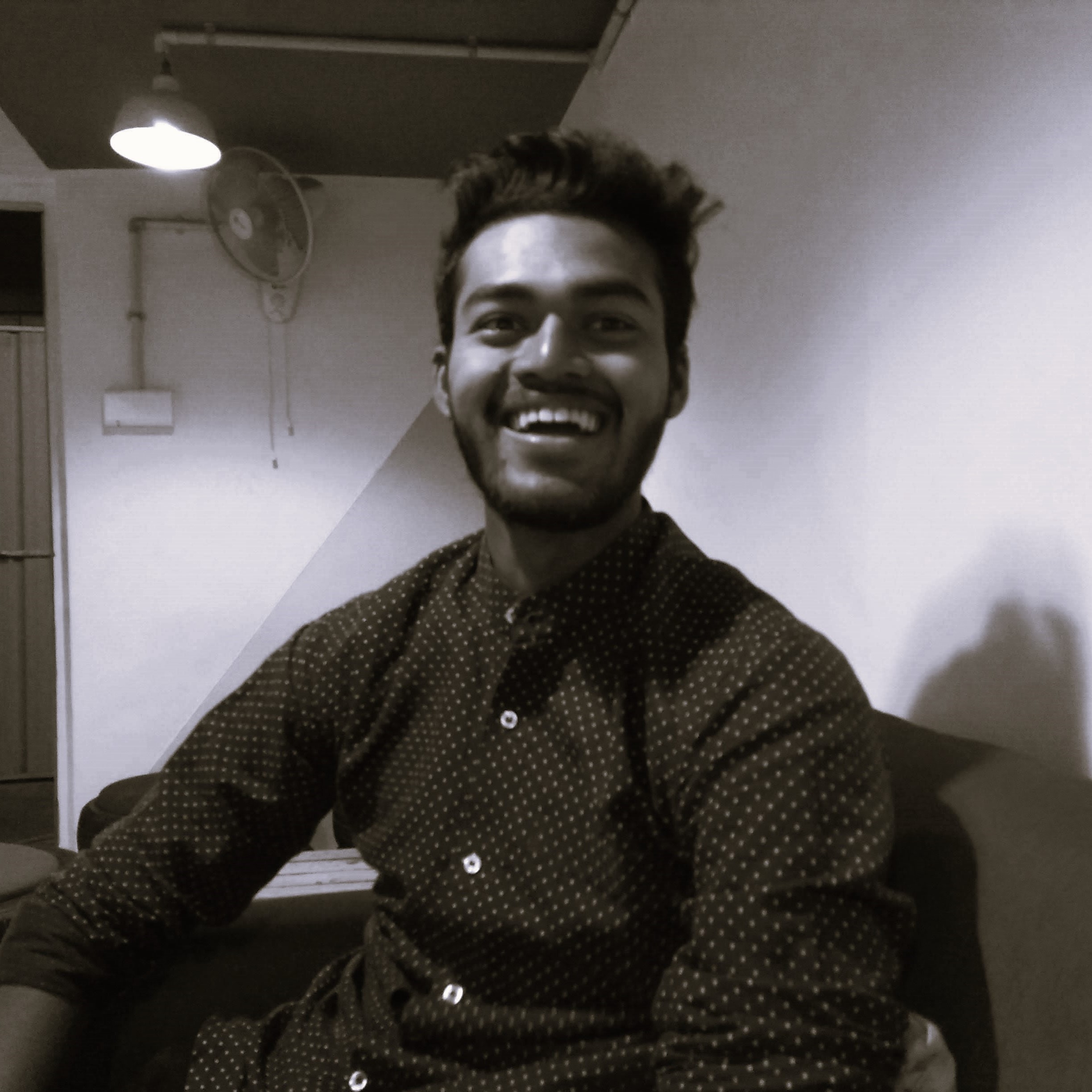
Contributor

